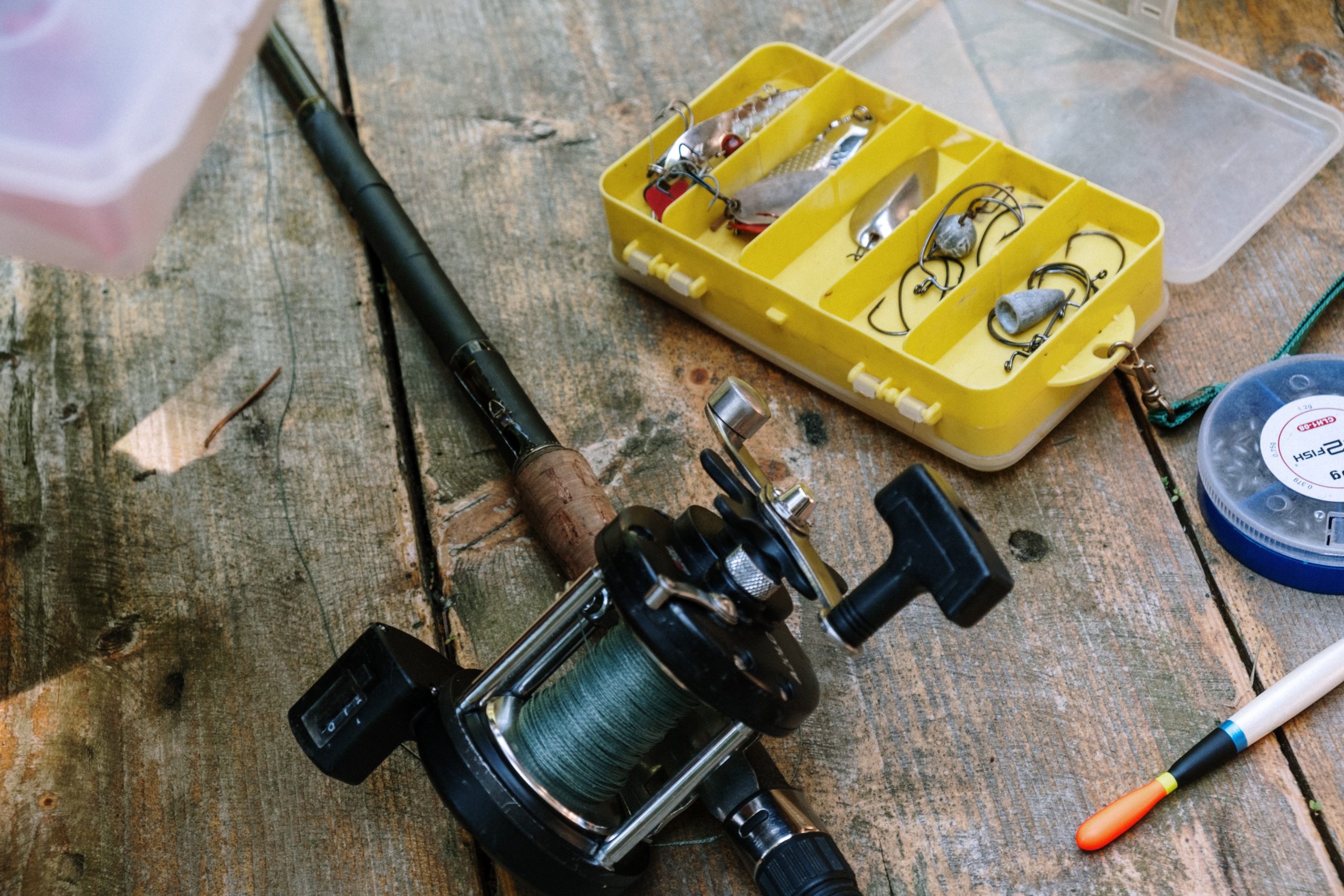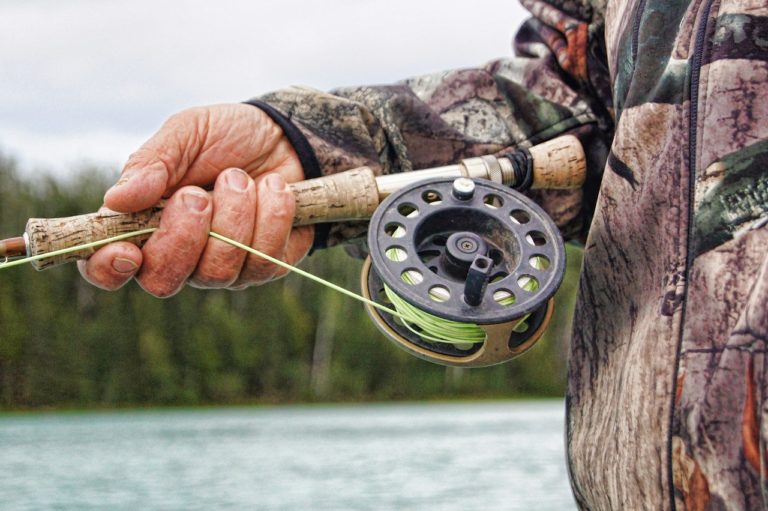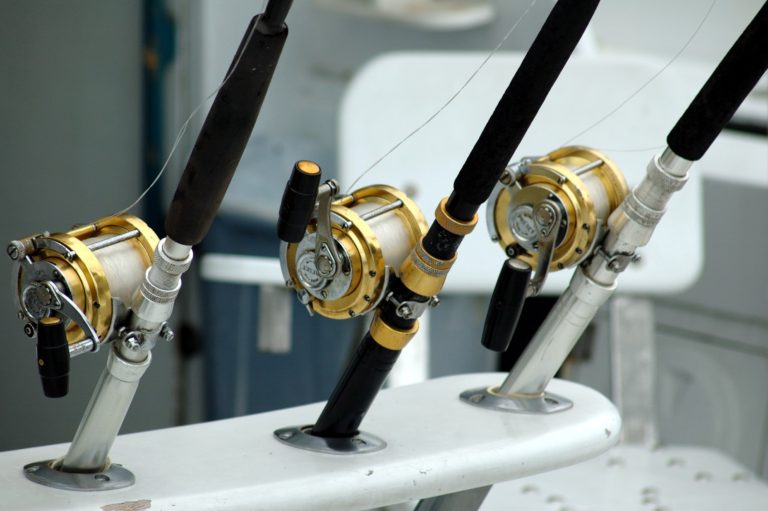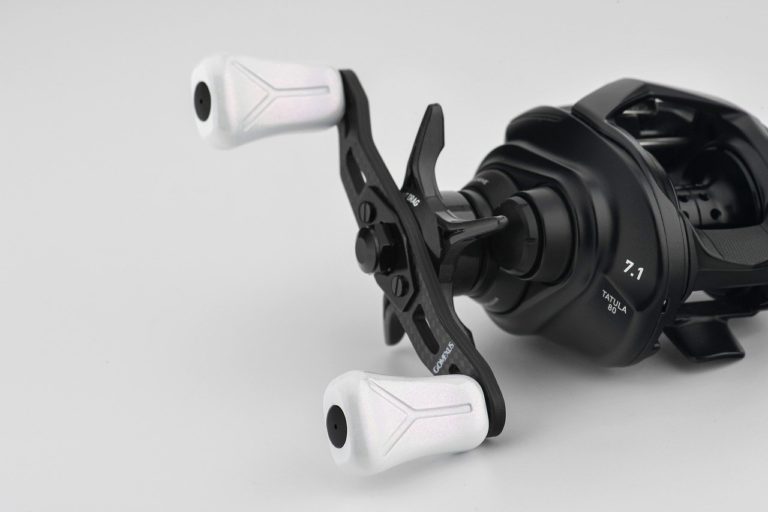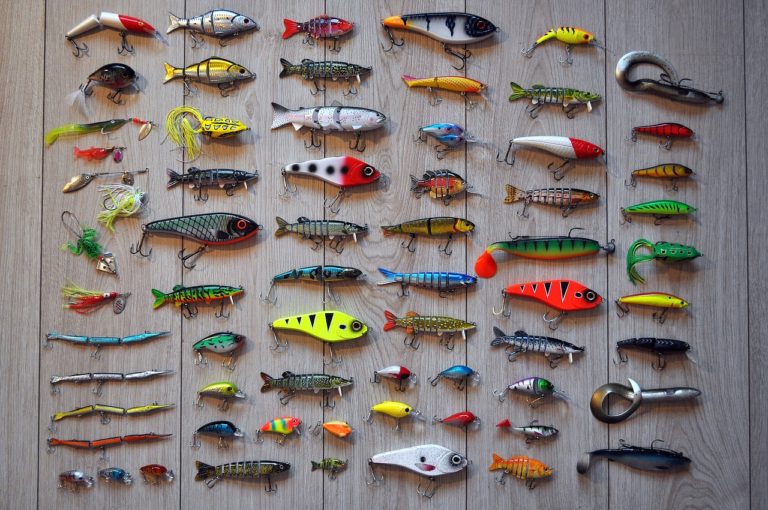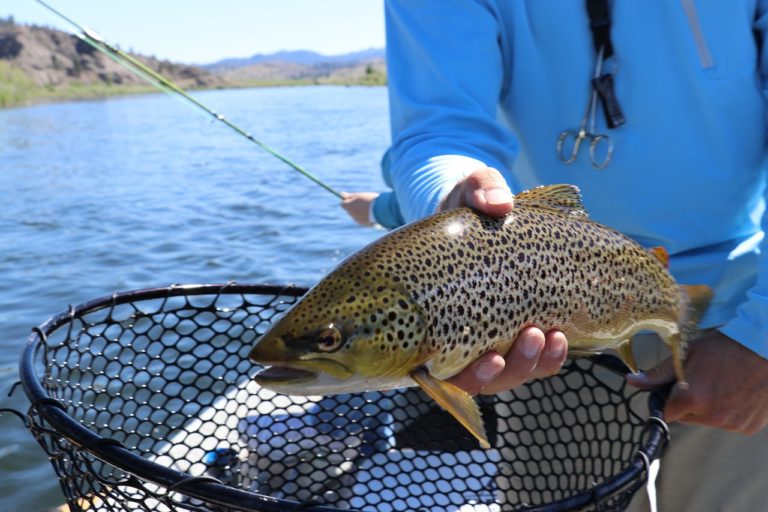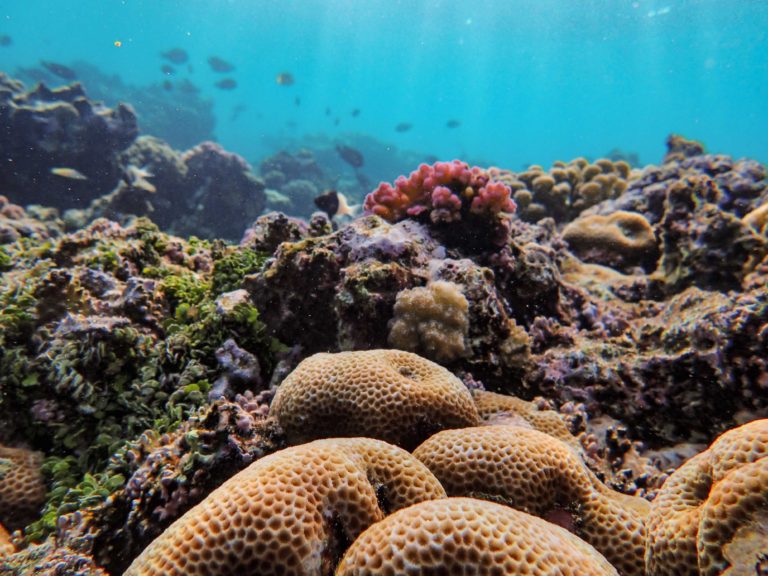Essential Fishing Gear and Tackle: Equipment to Start Fishing
What are the Essentials for Fishing?
Fishing is an activity that dates back thousands of years. It is an activity that has been enjoyed by people all over the world. For the beginner angler, however, it can be a bit daunting attempting to find the right gear to start fishing.
Whether you’re a beginner or an experienced fisherman, some fishing gear essentials should be included in your tackle box. In this blog, we’ll look at our list of fishing essentials and how they can help you to be prepared for your fishing trip.
Visit our article for an extended list of fishing gear and tackle ideas.
Fishing Rod and Reel
The most important piece of equipment for any angler is the fishing rod and reel. The type of setup you choose will depend on the type of fish you’re trying to catch. For example, if you’re looking to catch smaller fish, then a lighter setup may be best.
However, if you’re looking to catch bigger fish, then a larger setup may be necessary. Saltwater fishing will typically require a larger setup so you can hold large enough bait and weight to be effective.
Many times you will be fishing from a pier, jetty, or on the beach, all of which will require enough line and weight to make it past rocks and waves.
Fishing Rod
There are 3 main types of fishing rods. They are fly fishing rods, spinning rods, and casting rods. Each rod corresponds with its respective reel to make a rod and reel combo perfect for your specific needs.
Spinning Rods
Spinning poles are the most traditional fishing rods you will find. They have guide rings on the bottom of the rod to match up perfectly with the spinning reel.
These rods are great for beginners and for those who may be looking to do a more passive type of fishing.
Casting Rods
Unlike spinning rods, casting rods have guide rings on the top part of the rod which line up perfectly with the casting reels. Casting rods are wonderful for the more experienced angler and for those who might be looking to do a more active type of fishing.
Additionally, casting rods work fantastically when fishing from a boat or kayak as well as freshwater fishing.
The casting rod and reel setup allows the fisherman to quickly reel in and cast out their lure. This will increase the number of chances a fish will take the bait.
For this reason, it is the go-to setup for most professional largemouth bass fishermen.
Fly Fishing Rods
Additionally, you’ll need to consider the type of fishing you’re doing, as this will affect the type of rod you should buy.
Fishing Reel

Spinning Reel
A spinning reel is one of your more traditional options. It is paired with a spinning rod and is less likely to bird’s nest which is when the line tangles up into a big ugly ball of a mess.
Casting Reel
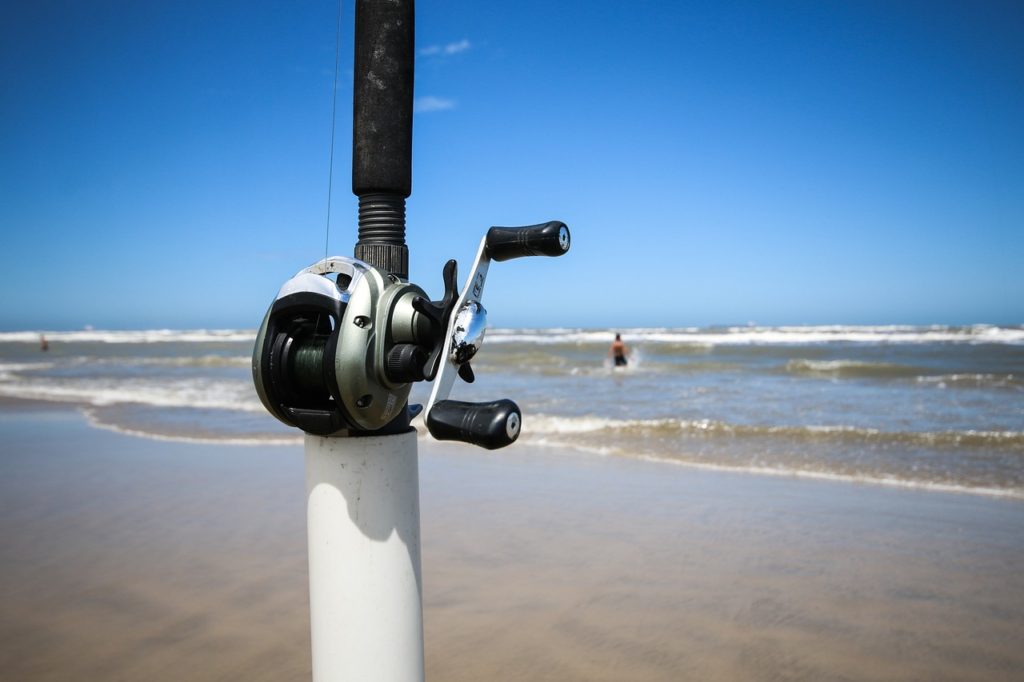
A casting reel is paired with the casting rods. The best casting reels will be super smooth and will allow you to cast the lure further distances. Additionally, some casting reels even have technology to help prevent your spool from bird-nesting.
They are designed for faster reeling, faster casting, and the ability to cast lighter lures. A casting reel can be a great tool to get more casts, but can also cost you time if not used correctly. For this reason, casting reels are better for the more experienced anglers.
Fly Fishing Reel
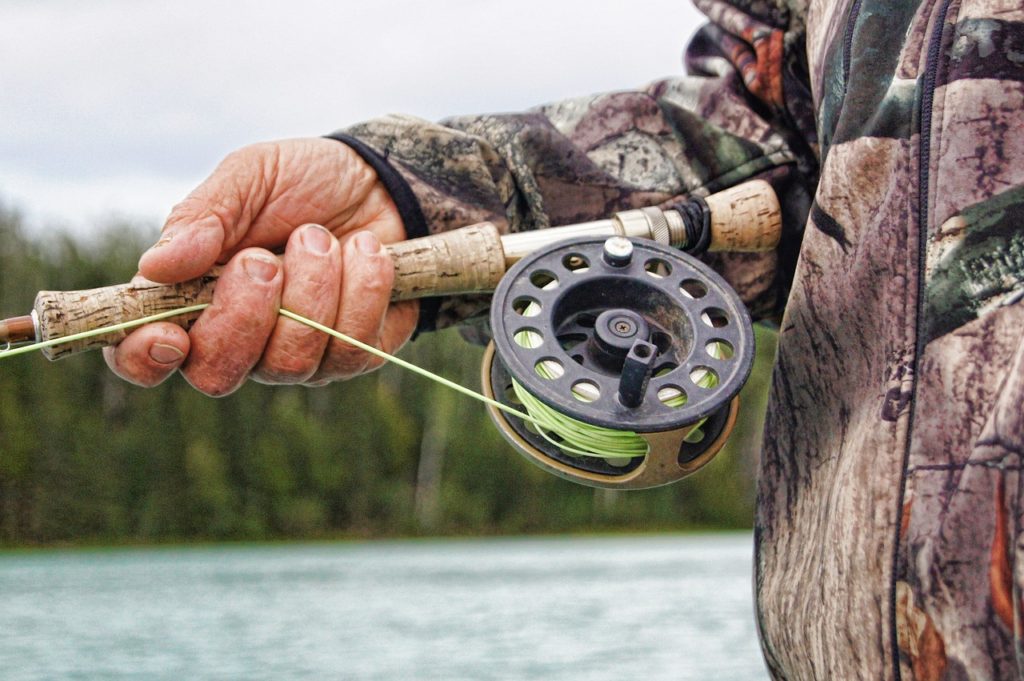
A fly fishing reel is quite different from the other types of reels and takes a lot of practice. Fly reels are of course paired with a fly rod and are usually used in rivers and creeks while the angler is wading in the water.
Fishing Line
Another essential for fishing is the fishing line. Fishing line comes in a variety of sizes and types. It’s important to choose the right one for the type of fishing you’re doing.
There are 3 main types of fishing lines. They are the monofilament line, braided fishing line, and fluorocarbon fishing line.
For example, for trolling, a heavier line may be necessary compared to fly fishing where a lighter line may be better.
Additionally, it’s important to choose a line that is strong enough to handle the size and type of fish you’re trying to catch.
Monofilament Fishing Line
Monofilament is the most basic type of line and should be the first choice for any beginner. It is a plastic line that comes in different colors and sizes.
It is the most cost-effective line. You will want to match the color of the line with the color of the line you are fishing in.
However, this is not an absolute must. There are a few disadvantages to monofilament line memory and a slower sinking rate.
Fluorocarbon Fishing Line
The main advantage of the fluorocarbon line is its low visibility in the water. This is good because when you are trying to catch smarter fish, they will see the line and be scared away by it. While trout and bass fishing, fluorocarbon line could be the difference between a monster catch and getting skunked.
Using a fluorocarbon line can be more expensive but it is also more durable and resilient to the elements.
Braided Fishing Line
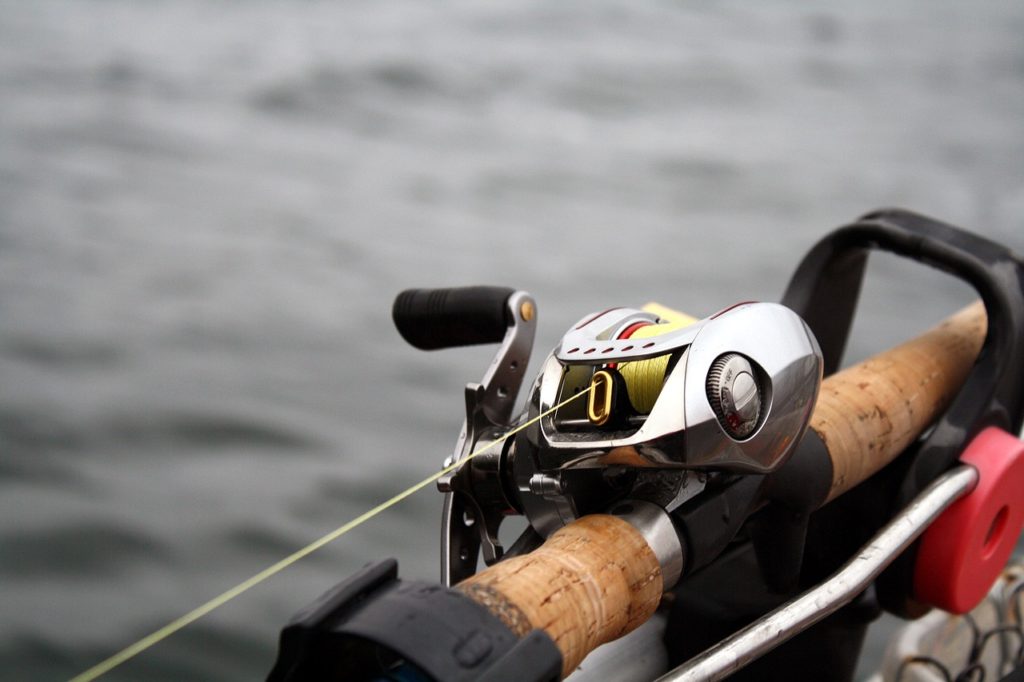
The braided line is much stronger and thinner than the other 2 types of line. This means it is good for vegetation and also for setting the hook.
This also means it is more expensive. Additionally, the braided line is highly visible in the water.
Fishing License
Let’s not forget about your fishing license. There are some locations you can fish without your fishing license.
However, other locations will require you to have an up-to-date fishing license. A fishing license can be purchased from your local sporting goods store.
Lures and Bait
Another essential piece of fishing gear is lures and bait. Lures and bait can be used to attract fish, and the type you use will depend on the type of fish you’re trying to catch.
For example, if you’re trying to catch bass, then artificial lures such as worms, grubs, and crankbaits may be best.
On the other hand, if you’re trying to catch salmon, then natural baits such as shrimp or herring may be better. Additionally, it’s important to choose the right size and type of lure or bait, as this will help you to catch more fish.
Spoons
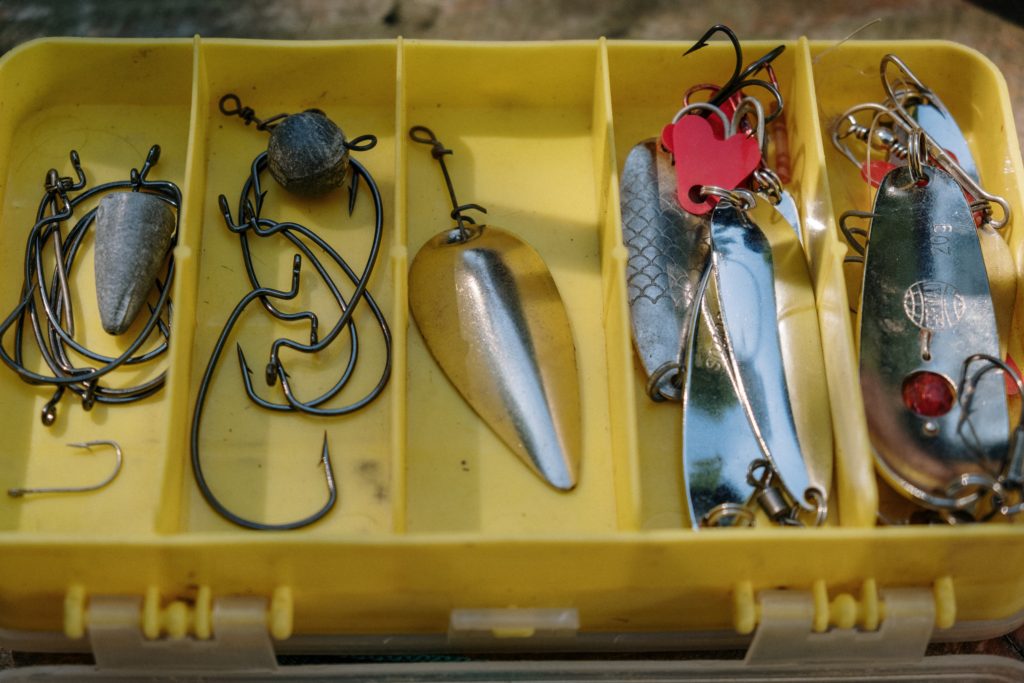
Spoons are round pieces of metal shaped similar to a fish. They usually have a treble hook at the end to catch the chasing fish.
They swim through the water column relatively smoothly and are designed to have the movement of a fish. Spoons are wonderful for bass fishing as well as trout fishing.
Visit our article for best spoons for trout!
Swimbaits
Swimbaits are soft plastic baits designed to look and move like fish. As you may have guessed, they resemble swimming fish when reeled through the water. Some swimbaits have a hook already attached, while others require you to attach your hook.
Live/Fresh Bait
The most popular live bait is worms. They are the go-to for many anglers and can be found at your local sporting goods store.
Hooks
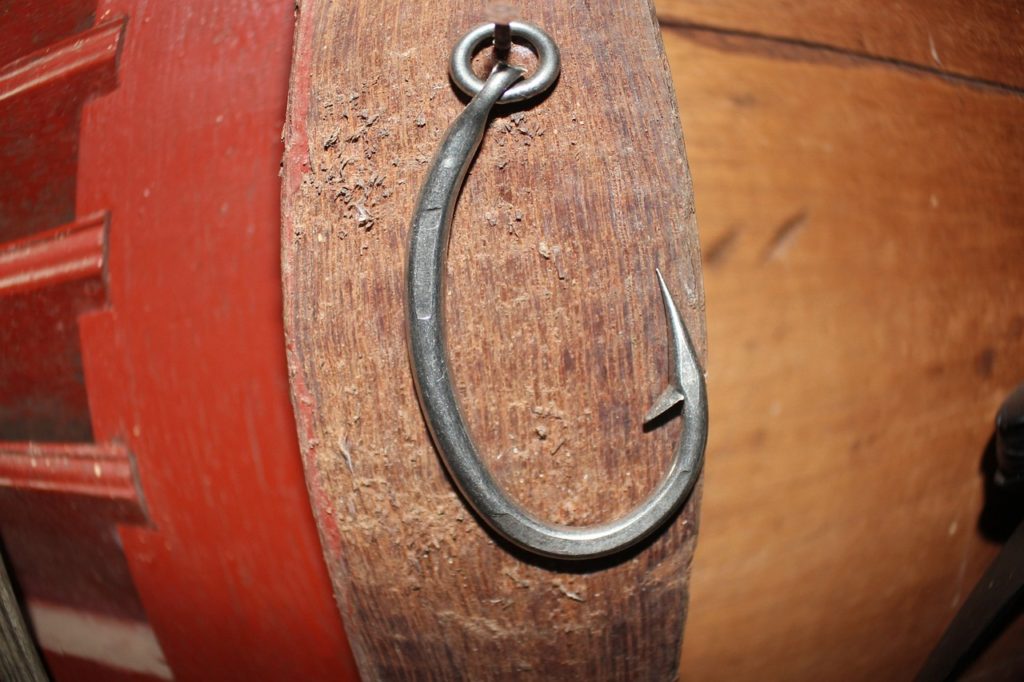
Hooks are another essential item when it comes to fishing. The type of hook you choose should be based on the type of fish you’re trying to catch.
For example, a small hook may be best if you’re trying to catch smaller fish. On the other hand, if you’re trying to catch larger fish, then a larger hook may be necessary.
Additionally, it’s important to choose a hook that is strong enough to handle the size and type of fish you’re trying to catch.
Circle Hooks
Circle hooks are safest for the fish and easiest to get out of the fish’s mouth.
Baitholder Hook
Baitholder hooks are basic hooks that work well for most types of baits. You don’t want your bait coming off in the water or while casting and for this reason, baitholder hooks are a good choice.
Worm Hook
Worm hooks are of course best for worms. It holds the worm in the best position to present to the fish. It allows the worm to move around while still being held snugly in place.
Jig Hook
If you’re looking to do a bit more active type of fishing, a jig hook is what you need. It will allow you to attach many types of soft plastics where you will be able to manipulate the action in the water. This will attract the fish to your lure and make it more enticing for them.
Needle Nose Pliers
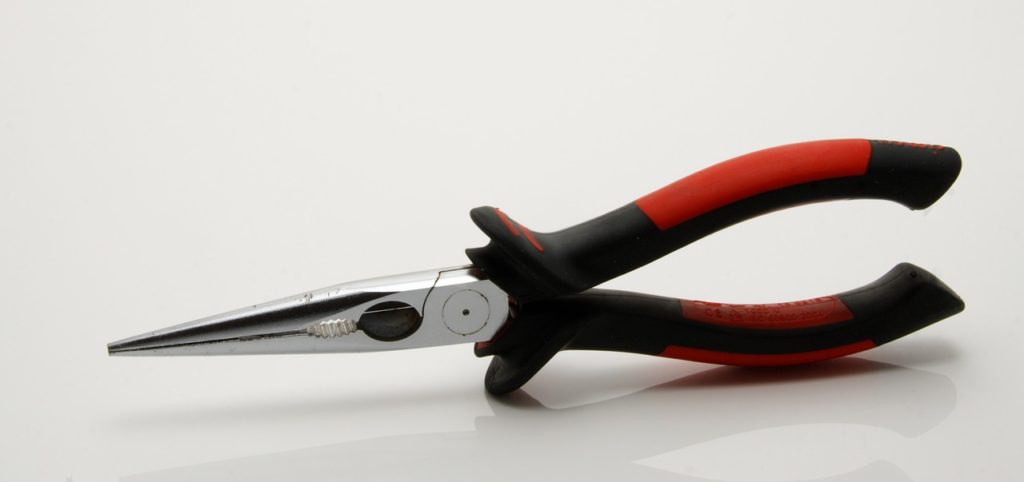
Needle nose pliers are a necessary piece of fishing gear because they’re essential for removing hooks. Sometimes they also come with a line cutter attached.
Sometimes the fish completely swallows the hook in which case you will have a hard time getting to the hook with your bare hands.
Other times the hook is in the fish in a way that your bare hands are just not able to get enough grip and torque. In these situations, it is quite handy to have a set of needle nose pliers.
Knife
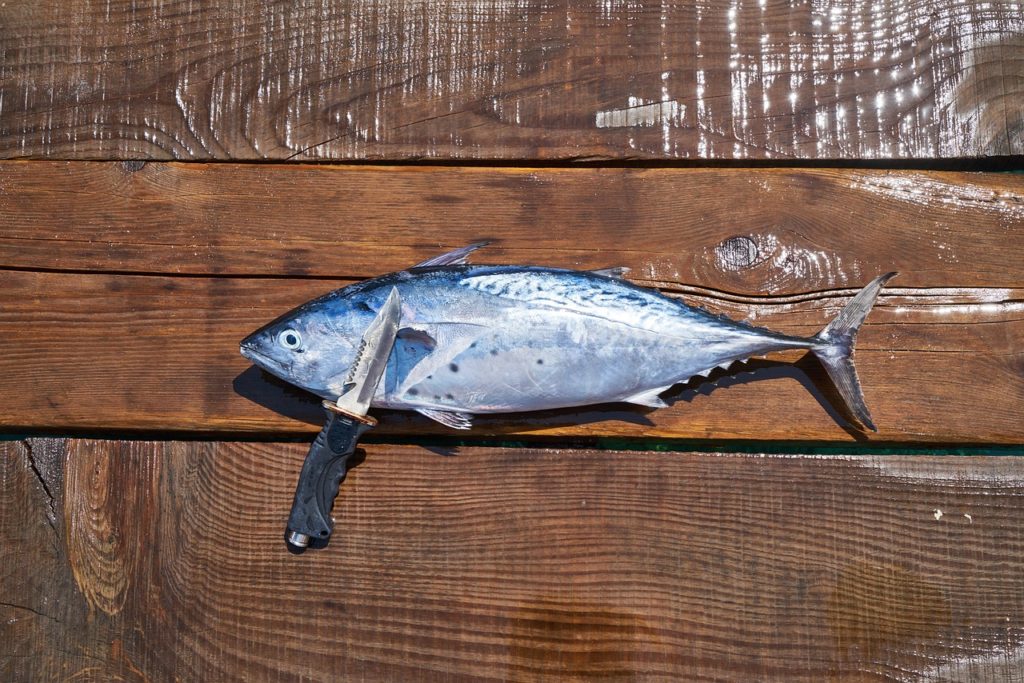
A knife is important for cutting bait and cutting fishing lines. While you can opt for something like fingernail clippers to cut your line, a knife will be more versatile and effective in more situations.
There are infinite uses for a knife including opening the packaging of a new lure, cutting line, and cutting bait. The best fishing knives are lightweight yet robust enough to cut bait.
Fishing Net
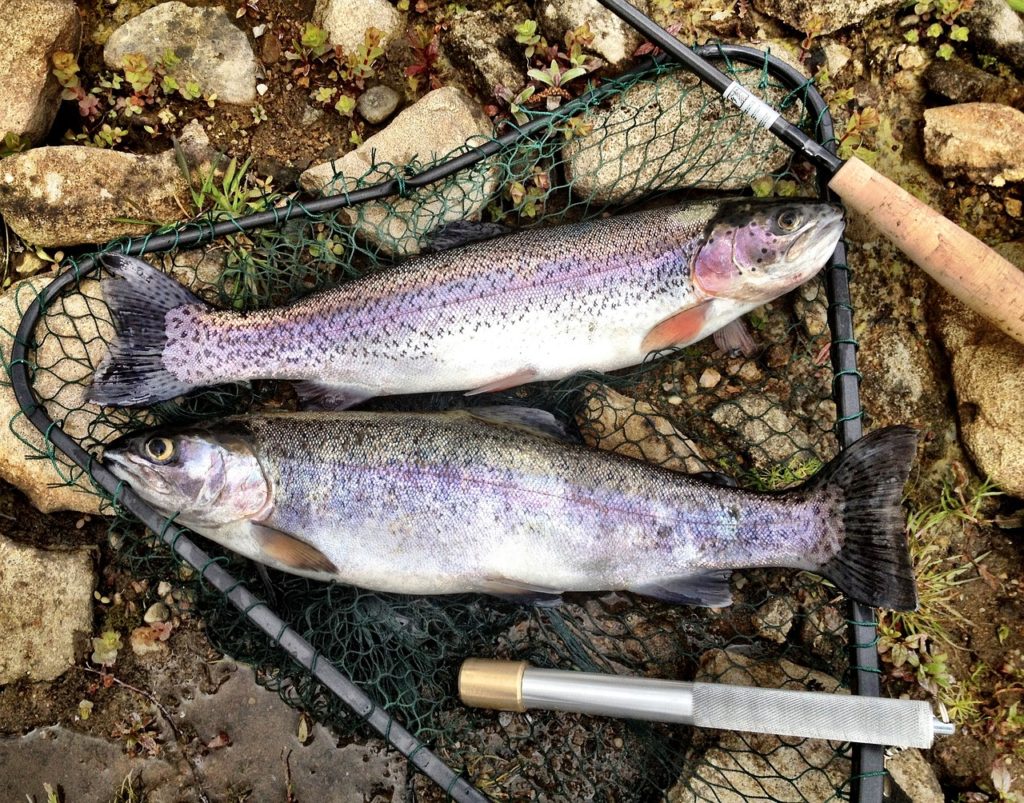
A fishing net is another essential item for any angler. A fishing net can be used to catch and land larger fish, and it can also be used to store smaller fish until you’re ready to release them.
Additionally, a fishing net can be used to scoop up bait and debris from the water, which can be helpful in certain situations. It is also a safer option when landing a fish.
It allows you to be further away from the water and also keep your hand away from the fish’s mouth where you will also find the sharp hook.
Sinkers
Sinkers are often overlooked when it comes to fishing gear. They are at times vitally important for your success as a fisherman.
When the current is strong, your bait will be pushed away and get caught in other peoples’ lines. Additionally, without a sinker, your bait may never make it to where the fish are at the bottom of the sea floor.
Towel
Fishing can get messy so it’s a good idea to bring a towel along with you. It will help you get fish slime and scales off your hands.
This piece of fishing gear is recommended to not be used while handling a fish.
This could cause the protective slime layer to come off, leaving the fish vulnerable to disease.
Fishing Tackle Box
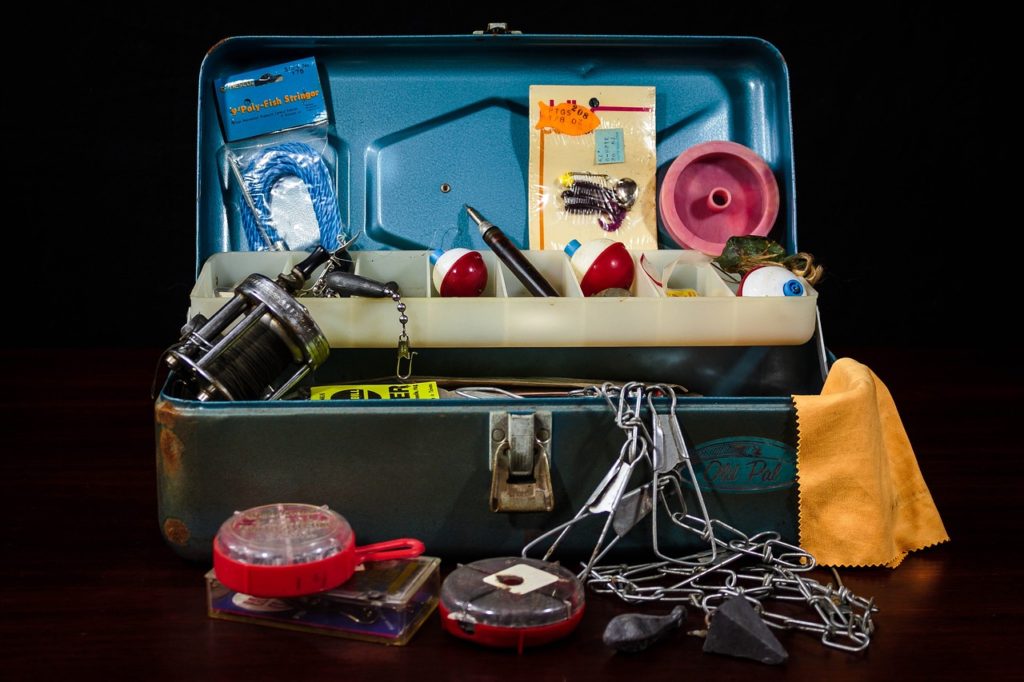
Finally, a fishing tackle box is an essential item for any angler. It can be used to store and organize all of your fishing gear, making it easier to find what you need when you’re on the water.
Additionally, a tackle box can also be used to store bait and other items, such as pliers, knives, and scissors.
Preparation is a large part of fishing. The last thing you want to be doing while out on the boat is to be trying to put together your fishing rig and trying to remember to tie certain knots.
With a fishing tackle box, you can do all these things ahead of time and store everything you need in the box.
Conclusion
If you’re new to fishing, then some fishing gear essentials should be included in your tackle box to start fishing.
These items include a fishing rod and reel, fishing line, lures and bait, hooks, a fishing net, and a tackle box. With these essential items, you’ll be able to become a successful angler in no time.
